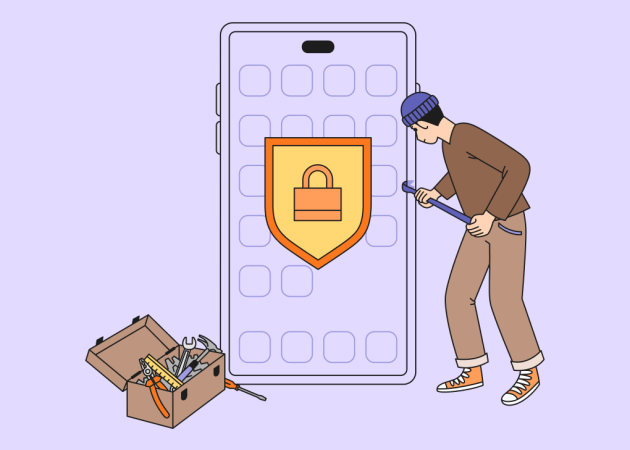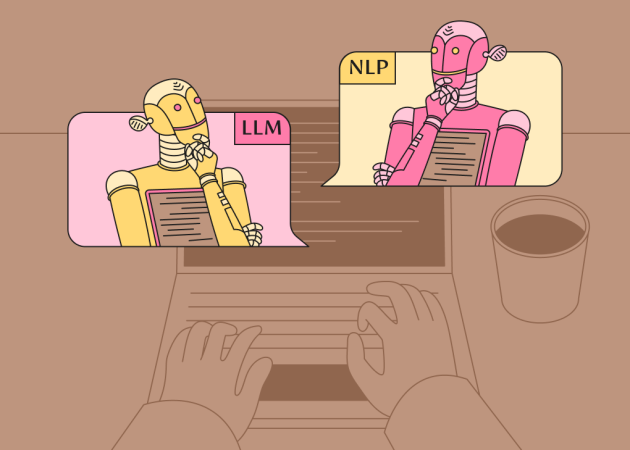
Application Security in 2025: Best Practices for Modern Development Teams
Contents
Contents
Application security is no longer just a technical detail, it’s a core part of running a modern business. Between 2024 and 2028, the global information security market is expected to grow from $183 billion to $292 billion, showing how much more companies now have to protect, and how complex that has become.
This growth is driven by new types of threats, larger attack surfaces, and rising pressure from both regulators and enterprise customers. For today’s development teams, that means security needs to be part of the process from the very beginning, not something added at the end.
In this article, we’ll look at what is application security and why is it important in the context of today’s fast-moving tech landscape. We’ll explore the most critical threats facing modern development teams in 2025, from insecure APIs to AI-driven exploits, and walk through prominent application security examples. Whether you’re building products, scaling a team, or navigating compliance, this article is designed to help you align security efforts with real business needs, and build software that’s secure, resilient, and ready for what comes next.
The Most Critical Risks for Application Security in 2025
In 2025, modern development teams must address both long-standing vulnerabilities and newer risks introduced by APIs, AI, and third-party integrations. Let’s take a look at the most critical application security challenges.
Broken Assess Control
Broken access control happens when users can perform actions outside their intended permissions. This includes issues like privilege escalation, path traversal, and insecure direct object references. These flaws are common in both legacy and modern applications.
Attackers often exploit them by modifying URLs, tokens, or request parameters. Without strong server-side checks, sensitive data and admin functions can become exposed. Broken access control remains one of the most exploited vulnerabilities in web applications today.
Injection Attacks (SQL, NoSQL, OS command)
Despite years of awareness and improved frameworks, injection attacks remain a persistent threat. They are especially common in legacy systems and applications with poor input validation. Attackers exploit untrusted input to execute unauthorized commands or queries, often leading to data exposure or system compromise.
According to the Verizon Data Breach Investigations Report (DBIR) 2024, SQL injection remains one of the top three methods used in web application breaches. In modern environments, attackers are also shifting toward NoSQL and OS-level injection, targeting less-defended vectors in microservices, containers, and backend scripts.
Insecure APIs
APIs power the core functionality of most modern applications, from mobile apps to cloud services. When poorly designed or inadequately protected, they become entry points for attackers. Common application security risks include broken object-level authorization, missing input validation, and exposure of sensitive data by default.
These vulnerabilities are especially dangerous in public-facing or high-traffic environments. Attackers often exploit them to bypass access controls, manipulate business logic, or extract data in bulk. Securing APIs isn’t just about perimeter defenses, it involves careful design, strict authentication, version management, and continuous monitoring throughout the API lifecycle.
Supply Chain Vulnerabilities
Modern applications rely heavily on open-source libraries, third-party APIs, and CI/CD tools, creating a complex ecosystem with hidden entry points for attackers. According to the ENISA Threat Landscape 2023, supply chain attacks are among the top cybersecurity threats, as adversaries increasingly target software dependencies and external services to infiltrate systems.
A single compromised component can impact thousands of downstream applications. These risks are hard to spot and fix, especially when companies don’t fully understand what software components and tools they rely on. To lower the risk, teams should regularly check their dependencies, use a software bill of materials to track components, and review the security of any third-party services they use.
Insecure Authentication and Session Management
Weak login systems and poor session handling make it easier for attackers to break into user accounts. Common mistakes, like using easy passwords, not storing tokens securely, or letting sessions stay active too long can lead to stolen accounts and unauthorized access.
These problems are especially dangerous in apps that store personal data or give access to admin features. Hackers often use stolen passwords, guess weak ones, or reuse old session tokens. To reduce the risk, apps should use strong passwords, enable two-factor authentication, store login tokens securely, and log users out after a period of inactivity.
Business Logic Vulnerabilities
Business logic vulnerabilities occur when attackers misuse normal features in unexpected ways. These flaws often result from assumptions in the app’s design, such as trusting that users will follow a certain flow or not repeat specific actions.
Because they don’t break the system but abuse how it works, these attacks often go undetected by automated tools. They can lead to things like bypassed limits, unauthorized discounts, or skipped approval steps. Preventing them requires human review, strong validation, and careful consideration of edge cases during development.
What Are Web Application Security Best Practices?
Now that we’ve talked about risks regarding application security, it’s time to discuss how to secure web applications. Here’s some of the best practices to strengthen your application security and prevent critical threats.
Adopt a DevSecOps Approach
DevSecOps integrates app security best practices directly into the software development lifecycle, making security a shared responsibility across development, operations, and security teams. Instead of treating security as a final check, DevSecOps encourages continuous integration of tools and policies from the earliest stages of development.
This means adding automated security checks, keeping track of vulnerabilities during development, and building in ways to learn and improve as you go. When security is part of the workflow teams can spot problems early, fix them faster, and still ship on time. It’s a smarter, more proactive way to work that helps you move quickly without sacrificing safety.
Shift Left on Security Testing
Shifting left means bringing security considerations into the earliest stages of development, starting with design, not just code review or deployment. By embedding tools like static application security testing, threat modeling, and secure coding reviews early in the software lifecycle, teams reduce the cost and impact of fixing vulnerabilities.
This approach also improves collaboration between developers and security engineers, strengthening secure coding habits over time. In 2025, with fast-evolving threats and compliance requirements, “shift left” is essential for building scalable, secure systems from the ground up.
Implement Strong Authentication and Session Controls
Authentication is one of the most targeted areas in web applications. Weak passwords, missing multi-factor authentication, and poorly managed session tokens can give attackers easy access to user accounts and sensitive systems.
To reduce this risk, teams should enforce strong password policies, use MFA by default, and handle sessions securely. That includes storing tokens safely, setting session timeouts, and revoking access after logout or password changes. These measures protect both users and infrastructure from common access-related attacks.
Secure APIs by Design
As APIs often serve as the backbone of modern applications, they are high-value targets for attackers. When API endpoints don’t have proper access control, validation, or error handling, they can expose sensitive data or allow unauthorized actions.
To reduce risk, APIs should be designed with security in mind from the start. That means validating all inputs, enforcing strict authorization for every operation, limiting data exposure in responses, and maintaining consistent version control. Secure APIs aren’t just a technical concern, they’re essential for protecting business logic and user trust.
Keep Dependencies Up to Date
Modern software is built on a mix of third-party libraries, tools, and frameworks, which means you’re also inheriting their risks. If these components are outdated or no longer maintained, they can give attackers an easy way in, especially if known vulnerabilities haven’t been fixed.
To stay safe, teams should regularly review what they’re using, clean out unused packages, and keep everything up to date. A Software Bill of Materials (SBOM) can help you keep track of it all. Updating might seem routine, but it’s one of the most effective ways to protect your app from supply chain threats.
Enforce Principle of Least Privilege
Granting users or systems more access than they need increases the risk of abuse, whether accidental or intentional. When permissions aren’t tightly controlled, a single compromised account or service can lead to widespread damage.
The principle of least privilege means giving each user, service, or process only the access necessary to perform its specific tasks. This applies across databases, APIs, internal tools, and cloud environments. Clear role definitions and regular access reviews help enforce this principle and limit the potential impact of a security breach.
Conduct Regular Security Reviews and Pen Tests
Security isn’t static, threats evolve, and so should your defenses. Regular security reviews help identify vulnerabilities that automated tools often miss, especially in complex or business-critical systems. This includes manual code reviews, architecture assessments, and collaborative exercises between development and security teams.
Penetration testing, whether internal or via trusted third parties, adds another layer of protection by simulating real-world attacks. Red team exercises go even further, testing how well your systems, teams, and processes respond under pressure. These practices not only uncover hidden weaknesses but also strengthen overall security awareness across the organization.
Leadership-Level Security Priorities: From Vision to Execution
Application security is no longer just a technical problem, it’s a strategic concern that spans across leadership roles. Whether you’re building a product, driving growth, or scaling a team, security decisions today shape long-term trust, performance, and compliance. Here’s what you should focus on to stay ahead in 2025.
Security as a business value, not just a technical concern
A strong security posture shows that your company is mature and trustworthy. It can also help speed up sales, especially when working with enterprise clients or going through regulatory checks. Being clear about your security practices, certifications, and how you handle data builds trust and sets your brand apart. To make an impact, security should be part of your product messaging, user onboarding, and customer support, not just something buried in technical documents.

Embed security into product development culture
This starts with a shift from “bolt-on” security toward continuous, integrated protection, beginning at the planning stage. Adopting DevSecOps tools and practices allows teams to identify vulnerabilities earlier, automate fixes, and reduce friction between developers and security teams.
But technology alone isn’t enough. Upskilling engineers in secure coding, threat modeling, and secure architecture empowers them to make better choices independently. Security champions programs, internal playbooks, and lightweight review processes can turn security into a shared mindset, not a bottleneck. When security becomes routine, velocity and resilience go hand in hand.
Prepare for SBOM mandates and supply chain scrutiny
With SBOMs gaining traction in both public policy and enterprise procurement, leaders can no longer ignore software supply chain transparency. SBOMs list all components, libraries, and dependencies within your product, providing the visibility needed to detect and respond to vulnerabilities quickly.
Governments and large enterprise customers increasingly expect SBOMs as part of vendor due diligence, especially after high-profile supply chain incidents. Founders and CTOs should invest in tooling and workflows that support automated SBOM generation and updates. Treating SBOMs as part of standard release processes helps teams stay compliant, responsive, and ahead of regulatory changes in 2025 and beyond.
Monitor AI-Driven threats and experiment with secure AI development
As AI becomes a core part of product functionality, from personalized UX to code generation and support bots, it also opens new attack surfaces. Prompt injection, model exploitation, and sensitive data leakage through LLMs are real and rising concerns. You must stay ahead by building internal awareness and experimenting with security controls specific to AI workflows. That includes user input sanitization, prompt filtering, rate limiting, and training data review. Secure AI development is still a moving target, but teams that engage early will have an edge.
Design for sustainable and efficient security
As tech leaders face growing pressure to reduce environmental impact, security practices must evolve alongside sustainability goals. Green security means building efficient, secure systems that minimize energy waste, whether through optimized code, leaner encryption, or reduced cloud overuse.
You should evaluate how security tooling, monitoring, and infrastructure choices affect energy consumption and operational footprint. For example, lightweight security checks integrated into CI/CD pipelines are often more resource-efficient than heavy post-deployment scans. Green security also includes reducing dependency bloat and eliminating unused services that increase attack surface and energy usage.
Future of Application Security in 2025-2026
New technologies, tighter regulations, and shifting expectations from both users and enterprise buyers are reshaping what secure development looks like. Here are the trends that will define where AppSec is headed next, and what forward-looking teams should prepare for.
AI-augmented attacks will evolve faster than defenses
The use of generative AI by threat actors is accelerating. Tools that automate reconnaissance, payload crafting, and vulnerability discovery are becoming more accessible and sophisticated. Attackers can now tailor phishing messages, probe APIs at scale, or manipulate AI-driven features with high precision. This raises the bar for defenders, especially in fast-moving environments where misconfigurations and weak logic often go unnoticed.
To stay ahead, app security teams must adapt their playbooks. This means running AI-specific threat models, simulating prompt injection scenarios, and testing AI-integrated features like chatbots or recommendation engines. Security reviews should include LLM behavior analysis and attack surface mapping beyond traditional inputs.
SBOM and supply chain requirements will tighten globally
Global regulators are making software supply chain transparency a priority. SBOMs, once a niche practice, are becoming essential for compliance and procurement, especially in sectors like healthcare, finance, and critical infrastructure. Organizations that can’t generate or maintain accurate SBOMs risk being excluded from key markets or contracts.
AppSec teams will need to automate SBOM creation and keep track of all software components across different environments. This isn’t just for meeting compliance, it’s also key to staying secure. When teams have a clear view of their dependencies, they can react faster when new vulnerabilities are found in third-party tools or libraries. A strong SBOM practice helps reduce risk, speed up response time, and make the entire software supply chain more resilient.
Secure coding will shift from training to built-in enablement
Security awareness training alone is no longer enough. In 2025 and beyond, organizations will focus on equipping developers with real-time tools and guardrails that make secure coding easier. This includes secure-by-default libraries, linters with contextual guidance, and AI pair programmers trained on safe coding patterns.
The shift is cultural as much as technical. Developers don’t want more blockers, they want to build safely without friction. By embedding security support into IDEs and CI/CD tools, companies can turn AppSec into a productivity multiplier rather than a bottleneck. Empowered developers write better code, reduce rework, and cut down on vulnerability backlogs.
Privacy and AppSec will converge
As data privacy laws become stricter, the gap between privacy and security is closing. It’s no longer enough to protect systems from hackers, companies also need to make sure that data isn’t misused by people or tools that already have access. Features that collect too much information, overly detailed logs, or unclear data-sharing practices can still cause serious harm to a company’s reputation, even without a breach.
To manage this, AppSec teams should work more closely with privacy and legal teams. Threat modeling should cover things like collecting unnecessary data, exposing shadow APIs, or mishandling user consent. Privacy-by-design will be just as important as secure code.
Energy-efficient security practices will gain strategic importance
As sustainability becomes a bigger priority for companies, security leaders are being asked to consider how their tools and systems affect energy use. Traditional security processes, like heavy scans and constant monitoring, can use a lot of resources and increase cloud costs and carbon emissions, especially in large-scale environments. Green security focuses on protecting systems while using fewer resources.
To support this shift, teams will streamline their workflows, remove unnecessary tools, and adjust cloud setups to match actual needs. Lighter scanners, smarter policy engines, and more targeted logging will take the place of energy-heavy solutions. Choosing efficient tools will also shape vendor decisions. Green security is becoming a core part of long-term business strategy.
From Strategy to Action
Application security in 2025 demands more than patching code or reacting to incidents, it requires a shift in how teams build, test, and think about software. As application security issues grow more complex and compliance expectations increase, security must become an integral part of product development and team culture. From AI-driven risks to supply chain transparency, the practices outlined in this article are not just technical checklists, they’re strategic necessities.
At Beetroot, we work closely with tech companies to strengthen their application security through a practical, people-centered approach. Whether you’re looking to upskill your dev team, audit existing systems, or build secure apps from the ground up, we’re here to help. If security is on your roadmap, let’s talk.
Subscribe to blog updates
Get the best new articles in your inbox. Get the lastest content first.
Recent articles from our magazine
Contact Us
Find out how we can help extend your tech team for sustainable growth.







